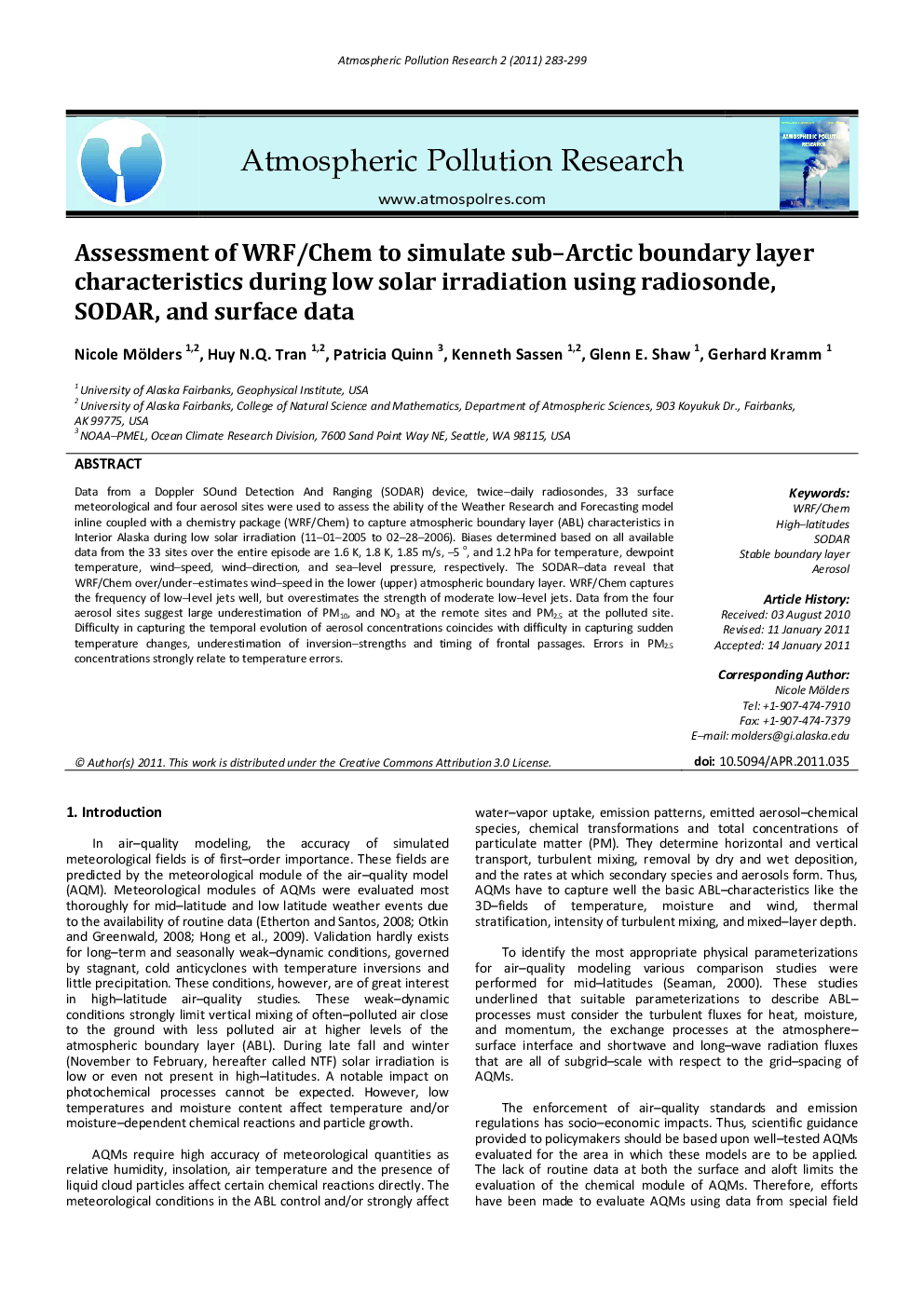| Article ID | Journal | Published Year | Pages | File Type |
|---|---|---|---|---|
| 4434928 | Atmospheric Pollution Research | 2011 | 17 Pages |
Data from a Doppler SOund Detection And Ranging (SODAR) device, twice–daily radiosondes, 33 surface meteorological and four aerosol sites were used to assess the ability of the Weather Research and Forecasting model inline coupled with a chemistry package (WRF/Chem) to capture atmospheric boundary layer (ABL) characteristics in Interior Alaska during low solar irradiation (11–01–2005 to 02–28–2006). Biases determined based on all available data from the 33 sites over the entire episode are 1.6 K, 1.8 K, 1.85 m/s, –5 o, and 1.2 hPa for temperature, dewpoint temperature, wind–speed, wind–direction, and sea–level pressure, respectively. The SODAR–data reveal that WRF/Chem over/under–estimates wind–speed in the lower (upper) atmospheric boundary layer. WRF/Chem captures the frequency of low–level jets well, but overestimates the strength of moderate low–level jets. Data from the four aerosol sites suggest large underestimation of PM10, and NO3 at the remote sites and PM2.5 at the polluted site. Difficulty in capturing the temporal evolution of aerosol concentrations coincides with difficulty in capturing sudden temperature changes, underestimation of inversion–strengths and timing of frontal passages. Errors in PM2.5 concentrations strongly relate to temperature errors.
